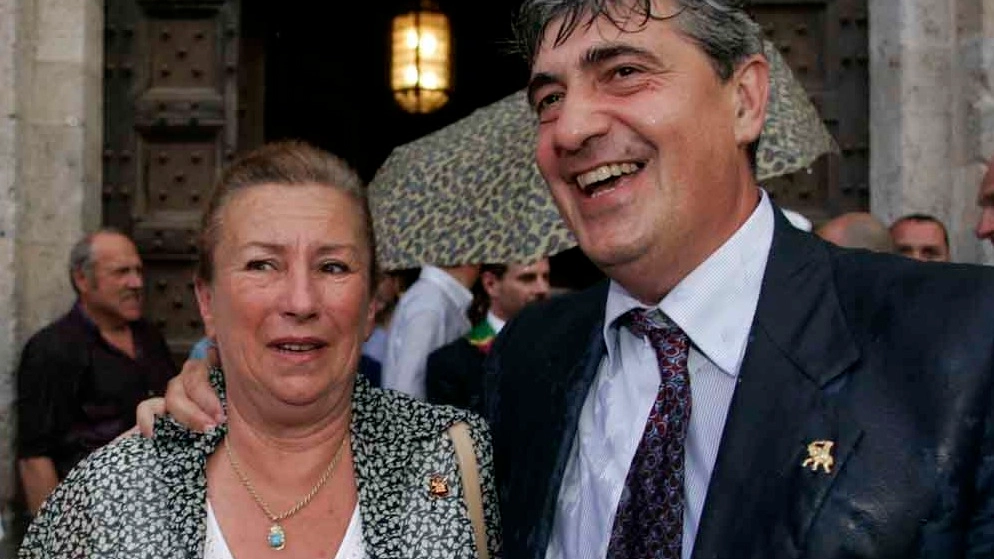
Maria Aurora Misciattelli in 2005 with the priore of that period, Massimo Brogi. She lead, as the captain of Torre, her Contrada to the victory
Siena, july 1st 2017 - On the occasion of the Palio di Provenzano, the one that takes place in July, one important traditional moment before the main race, the Carica del Drappello dei Carabinieri, will offer an unexpected news: for the first time a woman will lead it. The Carica is a performance of 12 massive and majestic horses of the Reggimento dei Carabinieri, one of the Italian forces of law and order. This year, the privilege of leading this touching moment is a responsibility of the Tenente Fabiola Garello who, both on the 1st and the 2nd of July, after greeting the “cittini” (the children of Contradas) and the local authorities, will head the famous Carica.
This moment is closed by the shout “Pastrengo” which recalls the historical battle of Pastrengo (Veneto) in 1848. The entire event represents a tribute to Siena and to the Palio, reinforcing the bond between the Carabinieri and the city.
The role of the women in the Palio might seem irrelevant, but it is not. Behind the event’s organisation there is the work of many women: from the artists of Cencio (symbol of the victory), just like this year painter Laura Brocchi, till the many cookers of the Contradas dinners, they play a fundamental role in supporting the Contradas leadership. One of the most significant figure in the recent history of Palio was and still is a woman: Maria Aurora Misciattelli who lead, as the captain of Torre, her Contrada to the victory, stopping the lack of victories which lasted 44 years.
In addition, nothing prevents women from being jockeys, although there is just one example of a woman who run the horse race in the history of the Palio. She is Rosanna Bonelli, called “Diavola” or “Rompicollo” (from the name of an operetta by her father, Luigi Bonelli) who rode Percina for the Contrada of Aquila in the Palio dell’Assunta in the August of 1957. In the same year some months before the Palio, Rosanna Bonelli took part to the movie La ragazza del Palio (The girl of the Palio) which contributed to make her dream come true.
In conclusion, the saying “behind a great man there is always a great woman” can be applied even to the Palio. In spite of the fact that they are behind the curtains, women are not only the co-protagonists of the Palio, together with the men of Contradas and horses, but also screenwriters.

